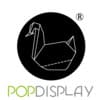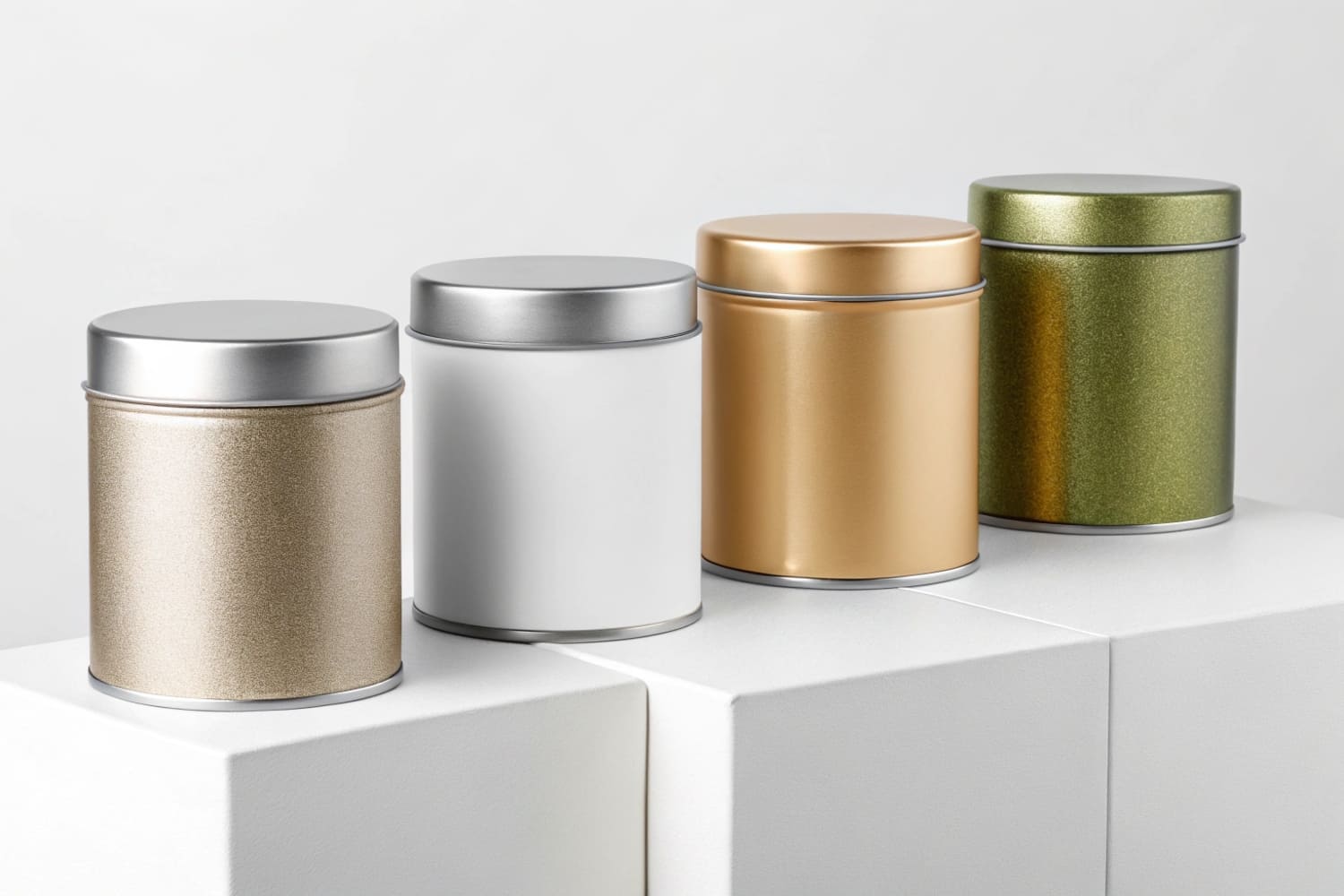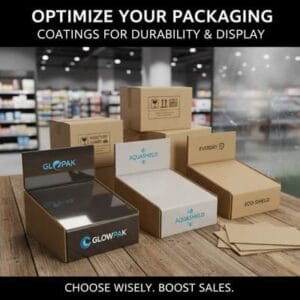You spend weeks designing a killer graphic, but if the finish is wrong, the whole thing looks cheap under store lights. It drives me crazy when I see good art ruined by bad coating.
Varnish in printing is a liquid coating applied after the ink to seal the design and enhance visual appeal. For personalized packaging and displays, options range from high-gloss UV for vibrancy to matte aqueous for a premium, readable look. The right choice prevents ink smudging, scuffing during transit, and adds critical moisture resistance.
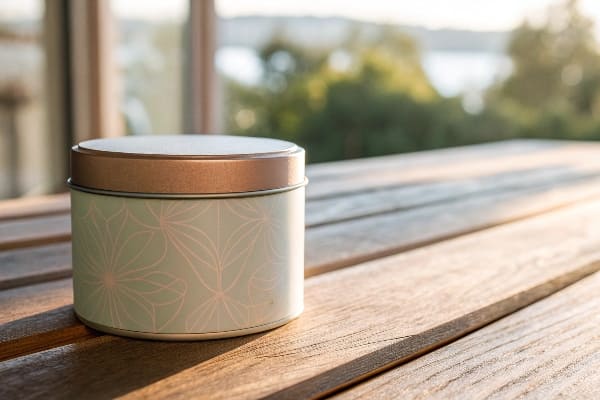
So, you need to know what protects your brand and what just costs extra money.
What is varnish for printing?
Most people think varnish is just about making things shiny. But in my factory, it’s about survival. If a display goes into a humid truck without protection, it’s dead on arrival.
Printing varnish is a transparent liquid coating applied to printed surfaces to lock in the ink and prevent rubbing. It acts as a shield against dirt, fingerprints, and moisture while manipulating light reflection to make colors pop or reduce glare. It is the first line of defense for preserving brand integrity in high-traffic retail environments.
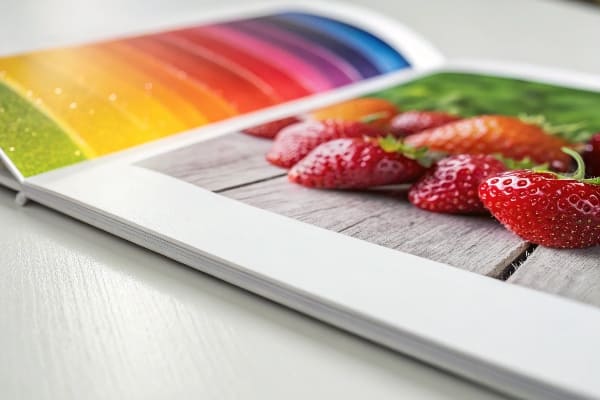
The Structural Anatomy of Ink Protection
In the US market, durability is everything. A lot of clients send me artwork with deep blacks or vibrant reds (like Coke Red), and they look great on a backlit Mac screen. But when you put that ink on raw paper fibers, it sinks in. It looks muddy. This is the "Muddy Color1" disappointment I deal with weekly.
Varnish isn’t just a top coat; it’s a saturation booster. When we run a job on our Heidelberg Speedmaster litho presses, the varnish stops the ink from looking "chalky." But more importantly, it stops the "Rub-Off2" effect. I use the "50-Touch Rule" in my shop. A standard display at Walmart or Target gets touched by at least 50 customers. If you don’t have a solid varnish, the acidity in human sweat breaks down the ink. You end up with a display that looks dirty and worn out by Day 3.
Also, think about the "Soggy Bottom" effect. Retail floors get mopped. If we don’t seal the paper, especially near the base, water wicks up the fibers. Varnish provides that essential barrier. It’s not just paint; it’s armor.
| Feature | Raw Ink (No Varnish) | Varnished Ink (Aqueous/UV) |
|---|---|---|
| Scuff Resistance3 | Low (Smudges easily) | High (Resists fingerprints) |
| Moisture Barrier | None (Absorbs water) | Moderate to High |
| Color Saturation4 | Dull / Flat | Vibrant / Deep |
| Yellowing over time | High | Low (Sealant protects) |
| Friction | High (Gritty feel) | Controlled (Smooth/Slip) |
I tell clients all the time, do not skimp on the finish to save pennies. A display that looks trashed after five customers engage with it damages your brand equity far more than the three cents you saved on the coating. It is better to have a simpler structure with a premium finish than a complex shape that scuffs immediately.
What are the different types of varnish?
There are a dozen fancy names, but in the factory, we really only care about three or four main chemistries. Each one reacts differently to the US climate and supply chain abuse.
Common packaging varnishes include Aqueous Coating (water-based and eco-friendly), UV Varnish (high-gloss cured by ultraviolet light), and Spot UV (highlighting specific areas). Specialized options like Soft-Touch (velvet feel) or Anti-Scuff coatings are used for premium brands to prevent transit damage and improve the tactile experience.
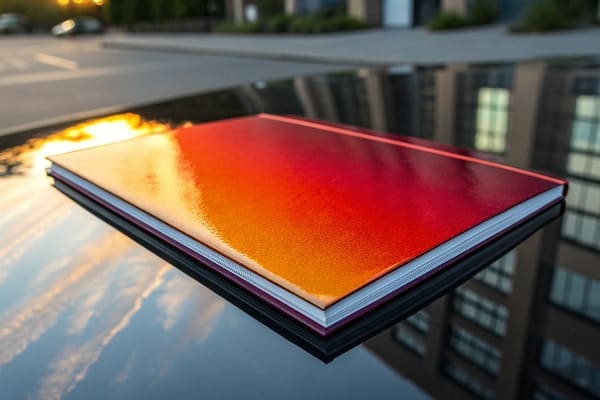
Chemical Composition and Retail Performance
You have to choose based on where this thing is going. Let’s break down the reality of what happens on the press.
Aqueous Coating (AQ)5: This is the workhorse. It’s water-based. Why do I use it for 80% of US orders? Because it dries fast and it’s curbside recyclable. US retailers are pushing hard for sustainability. If I use a solvent-based varnish, it might fail the recycling stream test. AQ is great for food brands because it’s generally non-toxic and odor-free.
UV Varnish: This is the show-off. We cure it with ultraviolet light instantly on the press. It gives you that "wet look" high gloss. It’s great for "visual disruption" because it reflects store lights, catching the shopper’s eye. But, and here is the messy part, UV coating can crack. If we score the cardboard too deep on a fold line, the UV layer snaps like glass.
Spot UV: This is where designers get into trouble. They want a matte black box with a shiny black logo. It looks sexy. But on corrugated board, the paper stretches. If the registration drifts even 0.5mm, the shiny part misses the logo, and it looks like a misprinted blur. To fix this, I use high-viscosity screen printing with a "trapping" allowance. It hides the imperfections.
Soft-Touch6: This feels like velvet or peach skin. Premium tech and cosmetic brands love it. But be warned: standard soft-touch is a fingerprint magnet. You touch it, and the oil from your hand stays there forever.
| Varnish Type | Gloss Level | Scuff Resistance7 | Recyclability (US)8 | Cost |
|---|---|---|---|---|
| Aqueous (AQ) | Low to Medium | Good | Excellent (Curbside) | $ |
| UV Gloss | Very High | Excellent | Good | $$ |
| Spot UV | High Contrast | Moderate | Good | $$$ |
| Soft-Touch | Matte/Velvet | Low (Fingerprints) | Good | $$$ |
I had a client from New York who insisted on Spot UV for a trial run on a low-grade recycled board. I refused to print it. I explained that the recycled fibers are too short and rough; the varnish would just soak in and vanish. We switched to a clay-coated virgin kraft liner, and the result was razor-sharp. You have to match the board grade to the varnish, or you are just wasting ink.
What kind of varnish should I use?
This isn’t about what you like; it’s about physics and logistics. Shipping a display from humid Shenzhen to dry Las Vegas changes everything.
Select your varnish based on the retail environment and product weight. For high-traffic stores like Walmart, use Anti-Scuff Matte or heavy-duty UV to resist abrasion. For food or eco-conscious brands, choose water-based Aqueous coatings to ensure the display remains 100% curbside recyclable and compliant with PFAS-free regulations.
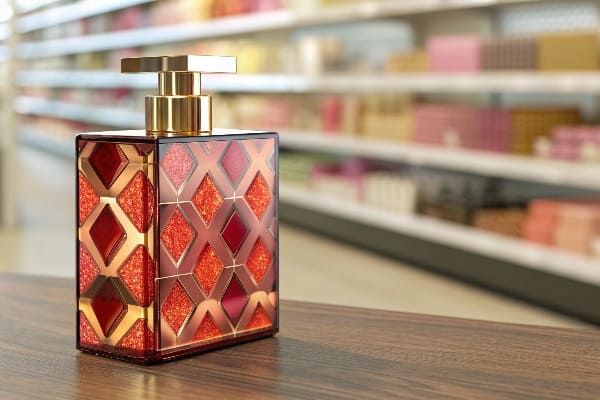
Strategic Selection for US Retail Compliance
Let’s look at the "Litho-Cracking" phenomenon. This is a huge pain point. If you ship a display to a dry state like Arizona or Nevada, the moisture gets sucked out of the paper. Standard hard varnishes become brittle. When the store clerk folds the display to assemble it, the ink cracks right along the spine, showing the white paper underneath. It looks terrible.
For these regions, or for displays with heavy black ink coverage over folds, I recommend a varnish with higher elasticity or a "Poly-Coat9" additive. It stretches with the paper.
Then there is the "Club Store" factor (Costco/Sam’s). These environments are brutal. Pallets get hit by forklifts; shoppers rip boxes open. A delicate soft-touch varnish will get destroyed. For Costco, I almost always recommend a heavy-duty UV gloss or a specialized "Anti-Scuff" matte. It needs to survive the friction of being jammed into a pallet skirt.
Also, consider the PFAS-Free Mandate10. States like California and New York are banning "forever chemicals" in packaging. Many old-school water/grease resistant coatings contained PFAS. We now strictly use verified PFAS-free water-based coatings. If you are selling food or snacks, this is non-negotiable.
| Scenario | Recommended Varnish | Why? |
|---|---|---|
| Costco Pallet | High-Gloss UV11 | Max durability, wipes clean, stands out. |
| Cosmetics / Tech | Anti-Scuff Matte12 | Premium feel, no fingerprints, luxury look. |
| Organic Food | Matte Aqueous (PFAS-Free) | Eco-friendly look, 100% recyclable. |
| Heavy Black Ink | Elastic Aqueous | Prevents white cracking on fold lines. |
A client shipping to Las Vegas ignored my warning about humidity versus dry heat. Their standard varnish cracked at every fold line once it hit the desert air. It was a disaster. Now, I always check the destination zip code. If it is going to a dry region, we change the varnish formula to be more flexible.
What is the difference between laminating and varnishing?
Clients mix these up all the time. One is a liquid; one is a solid film. The difference affects your price and your ability to recycle the unit.
Varnishing applies a liquid coating that dries on the paper, while laminating bonds a thin plastic film (PP or PE) to the surface. Lamination offers superior tear resistance and moisture protection but can hinder recycling. Varnish is cheaper and eco-friendlier but offers less structural reinforcement against tearing or heavy moisture.
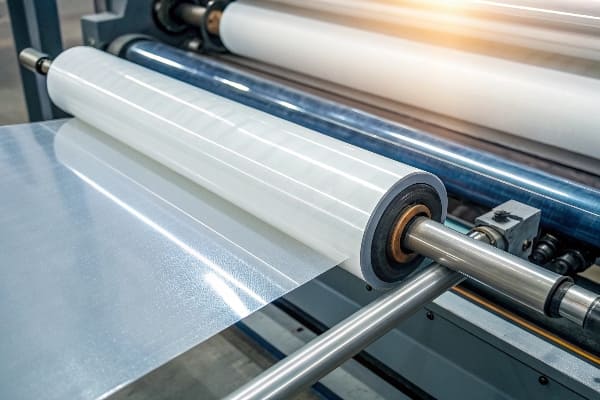
The Durability vs. Sustainability Trade-Off
Lamination is basically gluing a sheet of plastic over your cardboard. We use it when we need the "Mop Guard" protection. If a display sits on a wet floor, varnish might eventually wear through, but plastic lamination is waterproof. It also prevents "bursting" at the seams. If you have a heavy product, lamination acts like tape, holding the paper fibers together so they don’t rip under stress.
However, we are seeing a massive shift toward the "Mono-Material13" mandate. Retailers want to throw the whole display into the paper compactor. If you use a thick plastic laminate, it contaminates the recycling stream.
Then there is the "Matte Black" problem again. Standard matte lamination scratches if you look at it wrong. Store employees stocking shelves leave white scratch marks all over it. If you must use lamination for a dark design, I only use Anti-Scuff (Scratch-Resistant) PP Lamination14. You can drag a coin across it, and it won’t leave a mark. It costs more, but it keeps the display looking brand new.
Varnish (Liquid) is cheaper and faster. It’s great for short-term promos. Lamination (Film) is for long-term fixtures or heavy-duty use.
| Feature | Liquid Varnish | Film Lamination |
|---|---|---|
| Material State | Liquid dried on press | Solid plastic film glued on |
| Tear Strength | Low (Paper relies on itself) | High (Plastic reinforces paper) |
| Water Resistance15 | Moderate | Waterproof surface |
| Recyclability16 | Excellent (Repulpable) | Difficult (Plastic separation needed) |
| Cost | Lower | Higher |
Everyone wants the matte black look of an iPhone box. But standard matte lamination scratches instantly in a retail environment. That is why I push for the anti-scuff film if you have the budget, or a heavy aqueous coat if you need to be green. It saves you from complaints later when the display looks beat up.
Conclusion
The right finish does two things: it stops your display from falling apart, and it stops your customer from walking past. Whether it’s a high-gloss UV for a Costco pallet or a sustainable aqueous coat for Whole Foods, the choice determines the lifespan of your promotion.
Would you like to see how these finishes look on your specific brand colors? I can send you a Free Structural 3D Rendering showing the light reflection, or I can ship you a Physical White Sample with different coating options so you can feel the difference yourself before committing to a full run.
Understanding the Muddy Color effect can help you improve your printing techniques and achieve better results. ↩
Exploring solutions for the Rub-Off effect can enhance the durability of your prints and maintain their quality. ↩
Understanding scuff resistance helps in choosing the right ink for durability and quality in printing. ↩
Exploring color saturation differences can enhance your knowledge of print quality and visual appeal. ↩
Explore the advantages of Aqueous Coating for sustainable packaging solutions and its impact on retail performance. ↩
Discover how Soft-Touch coating enhances product appeal and its use in premium branding. ↩
Understanding scuff resistance helps you choose the right varnish for durability and finish. ↩
Learn about varnish recyclability to make eco-friendly choices in your projects. ↩
Learn about Poly-Coat additives to enhance the durability of your displays, especially in challenging environments. This resource provides valuable information. ↩
Understanding the PFAS-Free Mandate is crucial for compliance in packaging, especially for food products. Explore this link for detailed insights. ↩
Explore this link to understand how High-Gloss UV varnish enhances durability and aesthetics for your products. ↩
Discover why Anti-Scuff Matte varnish is ideal for cosmetics, providing a premium feel and luxury appearance. ↩
Understanding the Mono-Material mandate is crucial for sustainable packaging practices and recycling efficiency. ↩
Exploring the benefits of Anti-Scuff lamination can help you choose durable materials that maintain product aesthetics. ↩
Understanding water resistance can help you choose the right packaging for your products, ensuring durability and protection. ↩
Exploring recyclability can inform your choices in sustainable packaging, contributing to a greener planet. ↩
